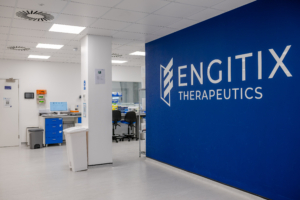Matrikines give hint to new asthma meds
Blocking the extracellular matrix (ECM) enzyme leukotriene A4 hydrolase (LTA4H) dampens inflammation but promotes changes in the airways of mice with allergic asthma due to accumulation of the ECM degradation product PGP.
The results http://stm.sciencemag.org/lookup/doi/10.1126/scitranslmed.aaq0693 of a British-Spanish-Polish research team headed by Dhiren Patel (Manchester) offers an explanation for the clinical failure and optimization of J&J’s LTA4H inhibitor JNJ-40929837. JNJ-40929837 was assessed in a human bronchial allergen challenge model of asthma, but despite demonstrating clear target engagement and reducing the proinflammatory compound LTB4, this drug failed to show any clinical benefit over placebo.
In mice leukotriene A4 hydrolase, a well-known modulator of inflammation, degraded ECM compounds including the matrikine PGP (Pro-Gly-Pro), which has also been found in the lungs of humans suffering from asthma and COPD. When Patel et al inactivated the enzyme in a house dust mite model of asthma, inflammation got weaker because proinflammatory LTB4 couldn’t be formed in absence of LTA4H while PGP accumulated and boosted airway sensivity and ECM remodeling in the lungs.
Furthermore, a structural relative of PGP named AcPGP enhanced mucus production and induced airway remodeling when administered to human bronchial cells in culture. The researchers examined sputum samples from two patient groups (50 patients total) with either moderate or severe asthma and found they harbored elevated AcPGP levels compared to controls. They conclude that remodeling can even develop independently of the inflammation and thus a more targeted approach towards LTA4H modulation is needed.


 Photo from Giulia Bertelli on Unsplash
Photo from Giulia Bertelli on Unsplash  Engitix
Engitix Evotec SE
Evotec SE